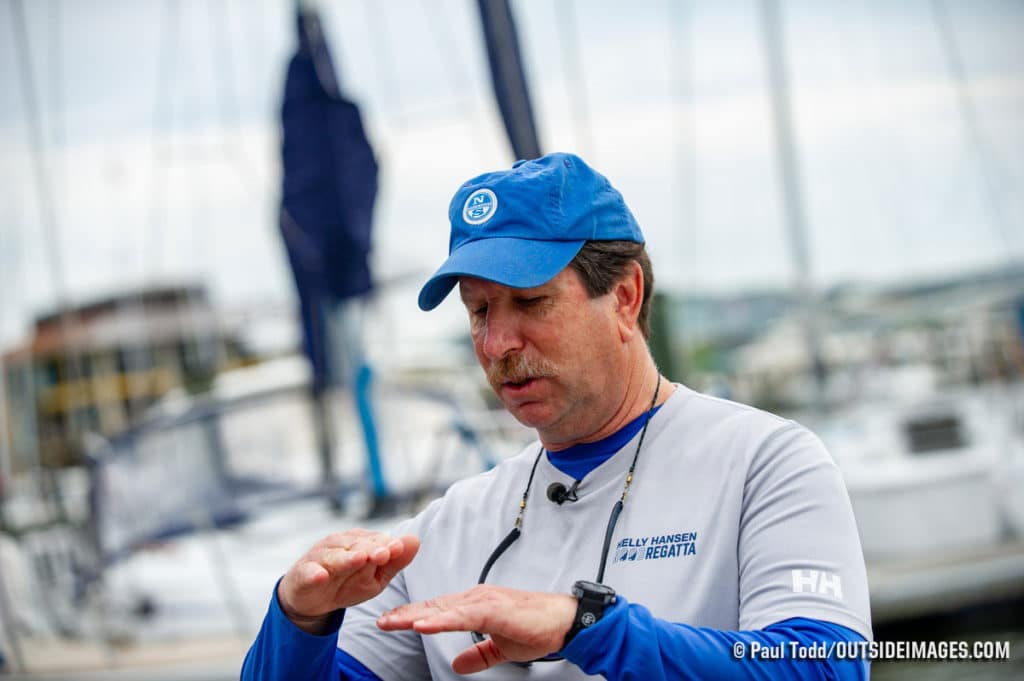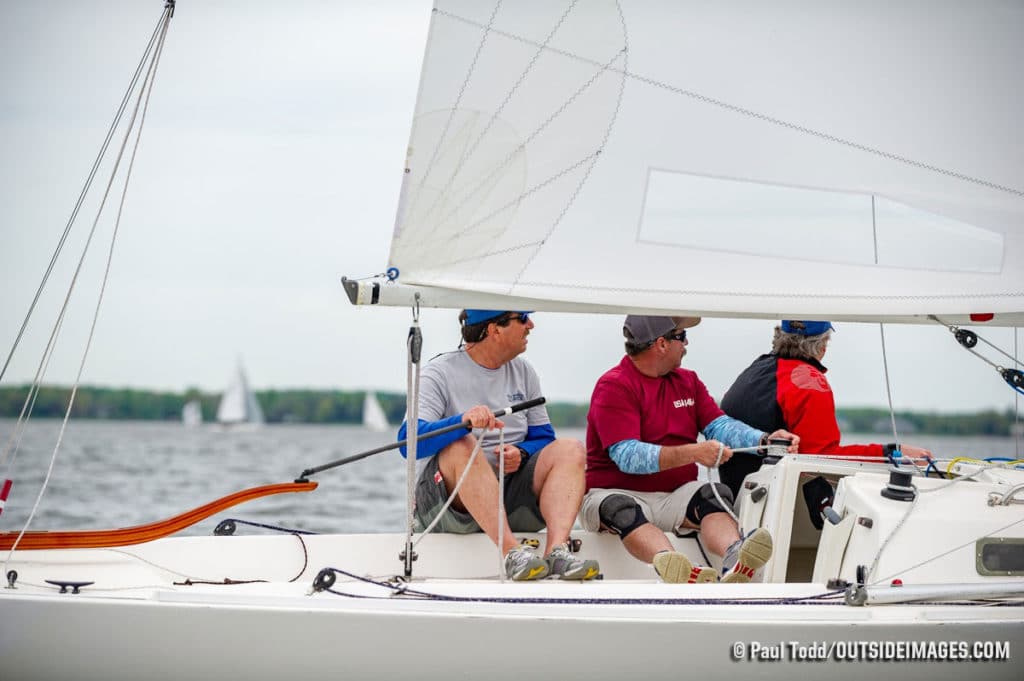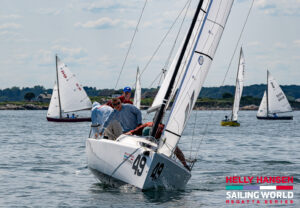As the local J/22 class measurer, Jeffrey Todd, of Annapolis, Maryland, knows the boats far more intimately than he may want to admit. Some say he can practically measure one simply by looking at it on its trailer. He’ll honestly tell you there’s not much difference between them, but still, he knows a fast boat when it shows up on the market.
“From the old TPI built boats there are some good one,” he says. The same is true of those built by Waterline Systems, the last U.S. builder to pull boats from the mold. “There are no superfast boats, but good boats are spread around.” One major difference between the two builders’ runs, he says, are that the mast steps are different. As a result, headstay length is a key measurement and mast rake is something an owner can experiment with.
Introduced in 1983 and now numbering nearly 1,700 boats worldwide, the J/22 is the type of boat that Todd says one can buy and fix up inexpensively. “[A used boat] could be anywhere from 5 to 20 thousand dollars, depending upon on how well it’s been maintained,” he says. “All you have to do is check the bulkheads for water damage, and other than that it’s simple boat to get into.”

Technical differences on the water come down to having a good set of sails and the rig tune right. But sometimes, he adds, the differences are substantial: “We seem to want to have the keel forward these days,” says Todd. “It’s like the J/24 in that you are always trying to get the keel forward. The boats don’t have a lot of helm so you create it with rake.”
Todd bought his first J/22 in 2004, getting out of the more demanding Melges 24, in advance of the J/22 World Championship that same year. “We finished 22nd and they did two fleets. It was always Annapolis-type conditions with current, windshifts, and the wind up and down, but we were very new. It was a lot of fun, a good experience.”
The simplicity of the J/22 is its greatest appeal, says Todd, but that doesn’t prevent the top guys from extracting the one-percent speed advantage, which ultimately makes a difference around the race track.
“They’re simple, yes, but we’re some of the older guys in the fleet and try and share our knowledge. A lot of yacht clubs around the country are buying J/22s as club boats so we’re losing some of our used boats to the clubs.” It’s harder today, therefore, to find one.”
As to his own desire to join the J/22 ranks, Todd says it was an opportunity to get back to boat that was easier to sail and required fewer crew. “It’s faster than the Sonar and it handles a bit better,” he says. “It’s a great little boat to sail; fun and lively with no engine so we have to sail in and out.”

In terms of boatspeed and success in J/22 racing, Todd reinforces the importance of rig tune. “A lot of it is mast rake on your particular boat,” he says. There are good tuning guides to start with then it’s a matter of finding the best sailing characteristics of your boat. “Rake is the hardest thing to calibrate in, but once it’s set, you don’t have to mess with it that much.”
It’s a well-traveled class as well, with championships north, south, east, and west, and for Todd, regatta travel has given he and his longtime teammates many a memorable week on the road. His favorite sailing sojourn was a recent class championship in Kingston, Ontario in Canada. “The wind and waves were fun,” says Todd, “but so too was finishing third overall, his best finish at a world championship in Buffalo, New York.
The J/22 World Championships are in September, with 40 something boats entered months out from the first race. Todd is hopeful it gets up to 75 or so and that would be plenty of competition for the already hypercompetitive team. “It should be a good event. I’m the measurement coordinator for the event, so I get to make sure the boats are up to snuff and then sail the event myself.”









